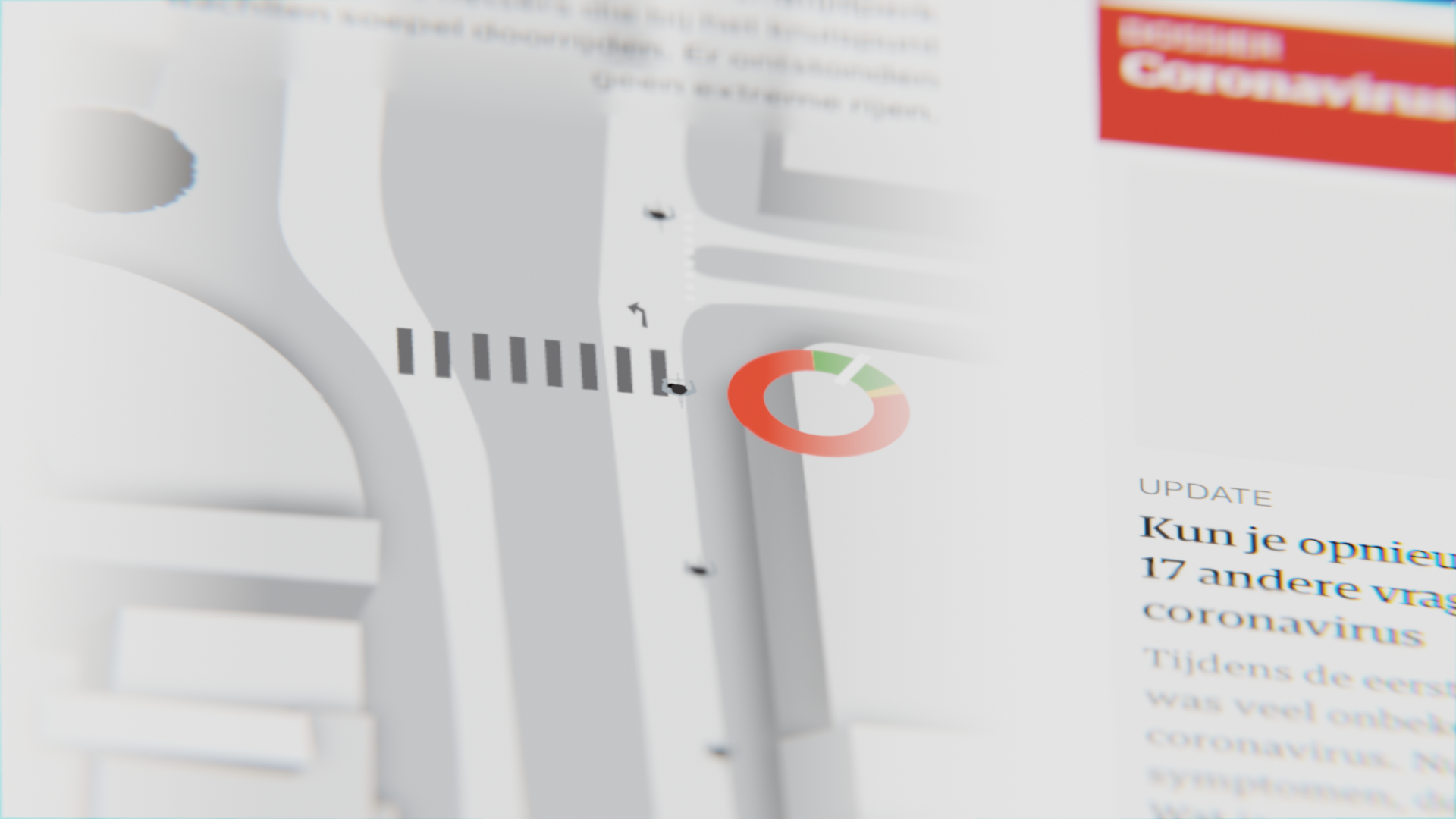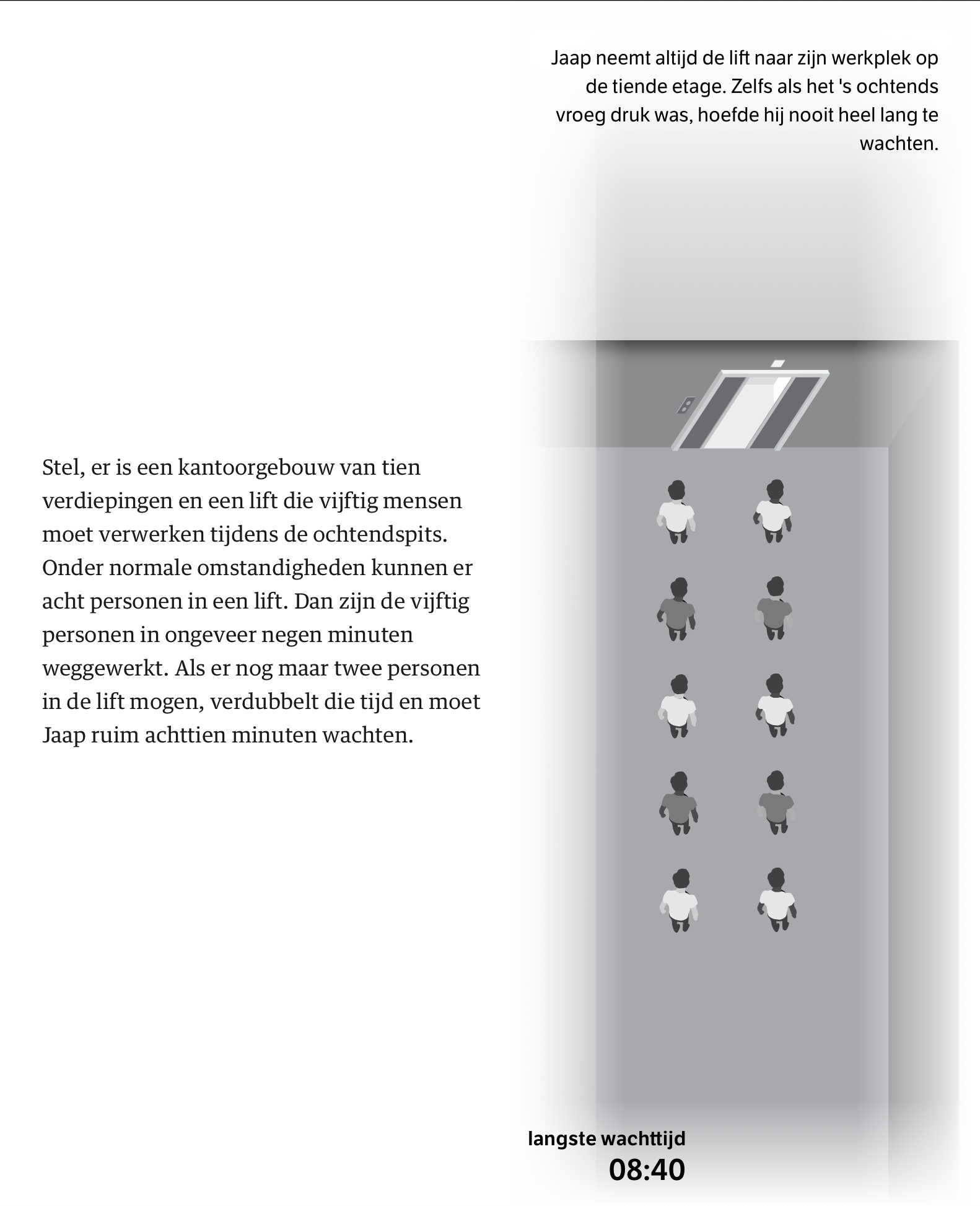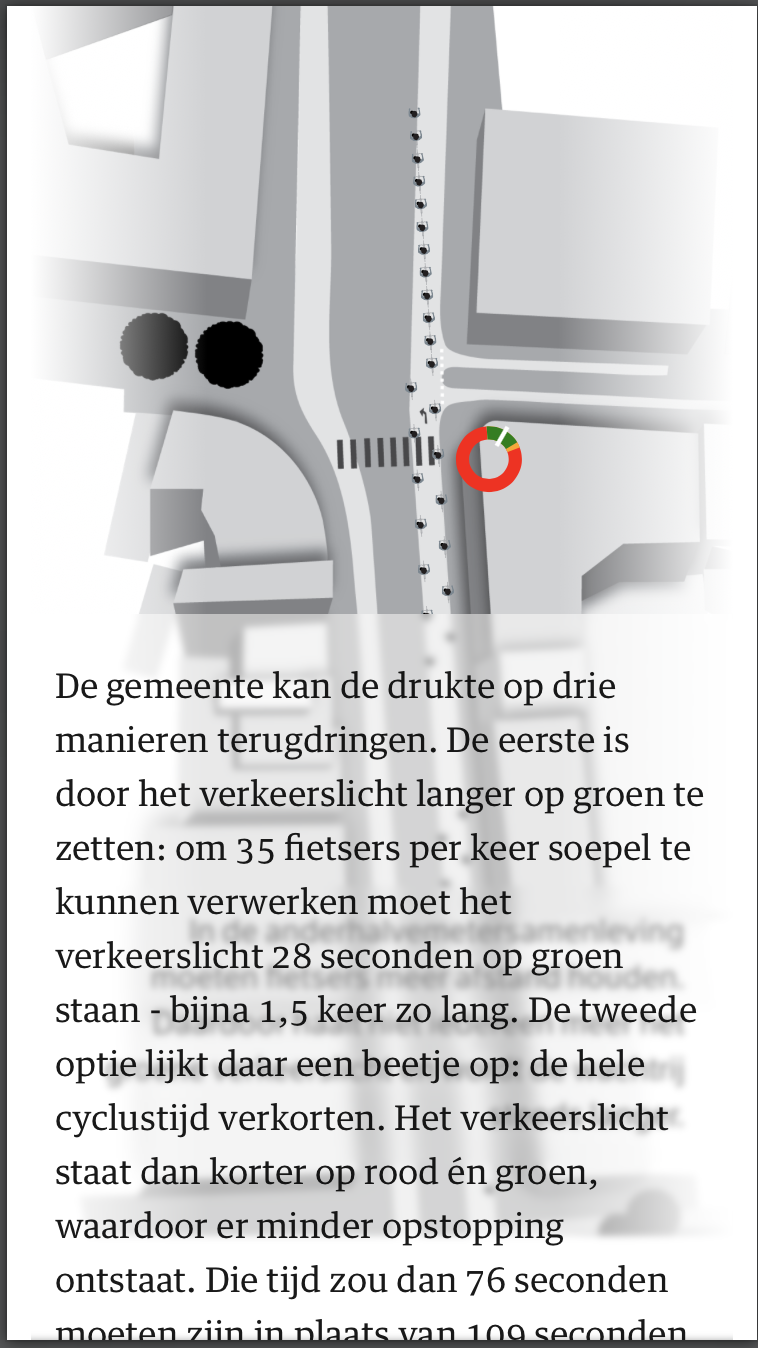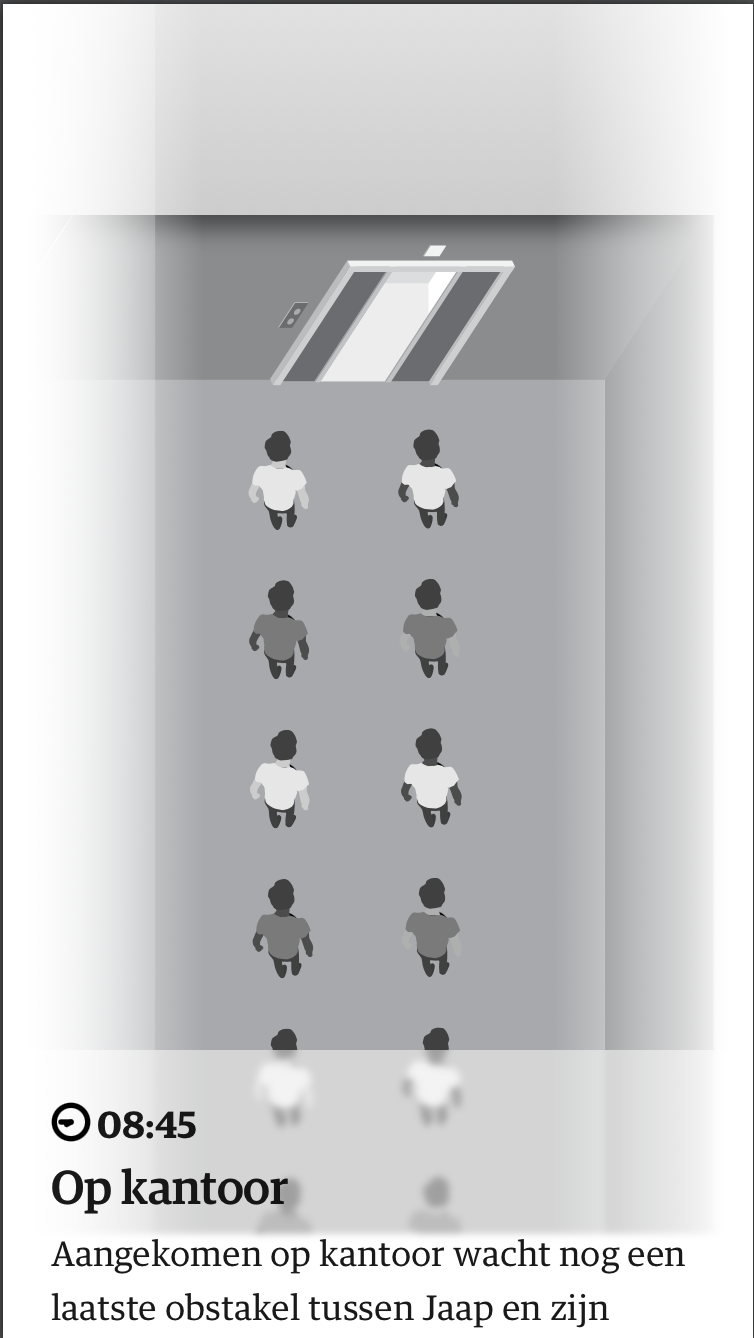
Living with distance
As the COVID-19 epidemic developed in early spring 2020, at NRC we started discussing how we could visualize some of the impacts of the new way of living that we all had to get accustomed to.

The dutch government was proposing new rules regarding safety but at the same time giving the impression that everybody could continue life as normal. The team decided to research this from the perspective of a normal day. Which aspects of the day would be impacted by the new rules and how?
Metadata
- client
- NRC Media
- time
- 2020
- stack
- Nuxt.js, Wordpress
- role
- Designer, Developer

In our project, we decided to design an interactive scrolling narrative. This narrative would display a variety of simulations, each one representing a different scenario. The purpose of these simulations was to illustrate the differences that would arise when implementing the new rules.
The process of creating these simulations was a fascinating journey. During this process, I discovered that there are essentially two distinct methods to create such simulations.
Each method has its own unique approach and application, offering different advantages depending on the specific requirements of the scenario being simulated. Understanding these methods and their applications can greatly enhance the effectiveness and accuracy of the simulations we create.

The first method is to create a simulation by simulating all the different operating parts of the simulation. This turned out to be a very difficult approach as it is easy to build the parts, but if you want to tell a story with them, it becomes difficult as you have to tweak the starting parameters in such a way that the end result is as you want. The second technique is to generate the result based on a rule-set, then use those results to approximate the way to get there. This was much faster and less cpu-intensive and allowed us to tell the story better.